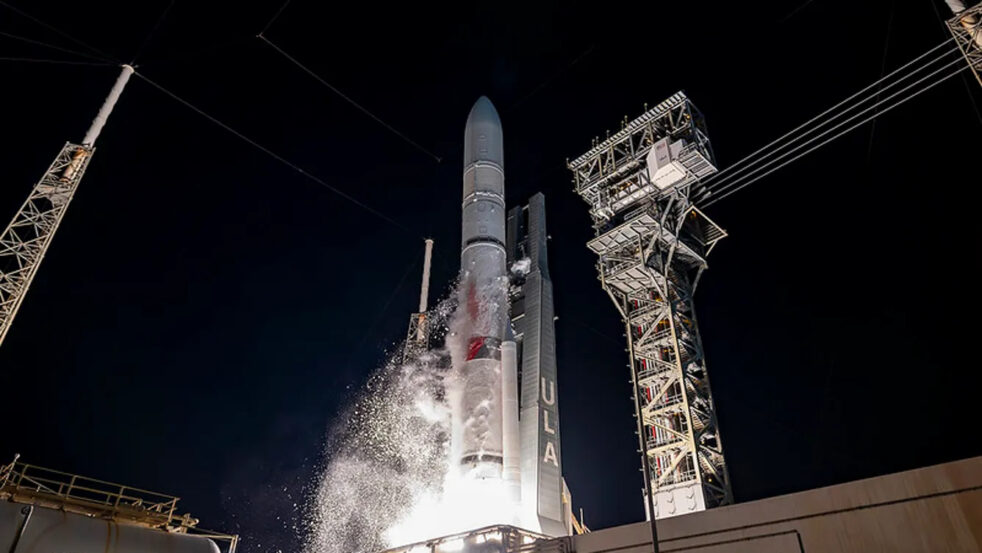Many were excited for the beginning of NASA’s Commercial Lunar Payload Services (CLPS) initiative, opening a new era of space exploration and research by partnering the public and private sectors. However, the inaugural mission has not gone as planned and has complicated the near future of the program.
On Jan. 8 at 2:18 a.m., the Vulcan rocket successfully launched with the Peregrine Mission 1 lunar lander from Cape Canaveral, Fla. The carrier craft is a product of the United Launch Alliance, and its first launch went perfectly, catapulting the Peregrine from aerospace company Astrobotic into space. While the Vulcan had a smooth launch, the lander soon ran into problems after separation from the rocket.
As communications began with the Peregrine and its systems deployed, the company announced via X, formally known as Twitter, that “an anomaly occurred, which prevented Astrobotic from achieving a stable sun-pointing orientation.” After an emergency maneuver to direct the Peregrine’s solar panels toward the sun, the team was able to troubleshoot the issues and consider alternate courses of action for the remainder of the mission.
Astrobotic followed in a series of tweets that a “failure within the propulsion system is causing a critical loss of propellant,” and that “the goal is to get Peregrine as close to lunar distance as we can before it loses the ability to maintain its sun-pointing position and subsequently loses power.” The company admitted that a soft lunar landing would not be possible for the Peregrine but updated on Jan. 11 that they were able to gather data from many of the lander’s payloads. While the intended mission of landing on the Moon will not happen, this endeavor has enabled multiple groups to perform studies while the Peregrine orbits.
Not only was this supposed to be the first lunar landing mission in decades, but the Peregrine was also the first craft as part of CLPS.
“When you focus on the classical procedure to develop missions, it takes a lot of time,” said Toshi Hirabayashi, associate AE professor, about the traditional process of NASA’s lunar missions. Hirabayashi explained that CLPS missions allow NASA to meet increased demands from companies and universities to study the moon, but also this means “they’re accepting some high risks, but they’re expecting higher rewards.”
While Hirabayashi was excited about the successful launch of the Vulcan rocket, the Peregrine’s outcome has both positive and negative indications.
“It is not good news, but this is how space treats us,” he said. “Many different tests are done on Earth, but even if spacecrafts pass those tests we don’t know exactly what happens to spacecrafts until they are sent to space.”
The lessons learned from the Peregrine will inform future CLPS missions, and Hirabayashi emphasized that there will be “more opportunities for not only academic or research institutions but also commercial sectors to be able to join space missions.” Others echoed Hirabayashi’s sentiments that this setback can be overcome.
“All maiden space flights are test missions with a chance of failure,” said Thomas Orlando, professor in the School of Chemistry and Biochemistry and principal investigator of the Radiation Effects on Volatiles and Exploration of Asteroids and Lunar Surfaces at Tech, a program sponsored by NASA. For Orlando, the failed mission “slows progress for sure, but will not stop the momentum and interest nationally and globally in going forward to the moon for future long-term, human-based exploration missions.”
Current students are just breaking into aerospace sectors as commercial space programs grow. Some Tech students have even experienced complications with lunar rocket launches through internships or personal projects.
Shan Selvamurugan is a first-year AE Ph.D. student and was part of the mission operations team for Lunar Flashlight, a small satellite from NASA that was owned and controlled by Tech in 2023. Lunar Flashlight was supposed to search the moon for permanently shaded regions that may contain water or ice — a key factor to extraterrestial life. Two days into the voyage, the team realized the continual tumbling of the spacecraft would not allow its initial goals to be fulfilled.
“There’s only so much quality assurance testing and preparation that you can do to account for any risks, and things can still go wrong,” Selvamurugan said.
Reflecting on the Peregrine’s mission and its similarities to the Lunar Flashlight’s problems, Selvamurugan affirmed that he is “hopeful that they’ll be able to use lessons that they learn from this mission for the future missions that they have coming up.”
As of Jan. 16, the Peregrine is heading towards Earth and is expected to burn up during reentry to the atmosphere. NASA will continue to launch missions in the coming months, with both its own crafts and more CLPS expeditions in the near future.
